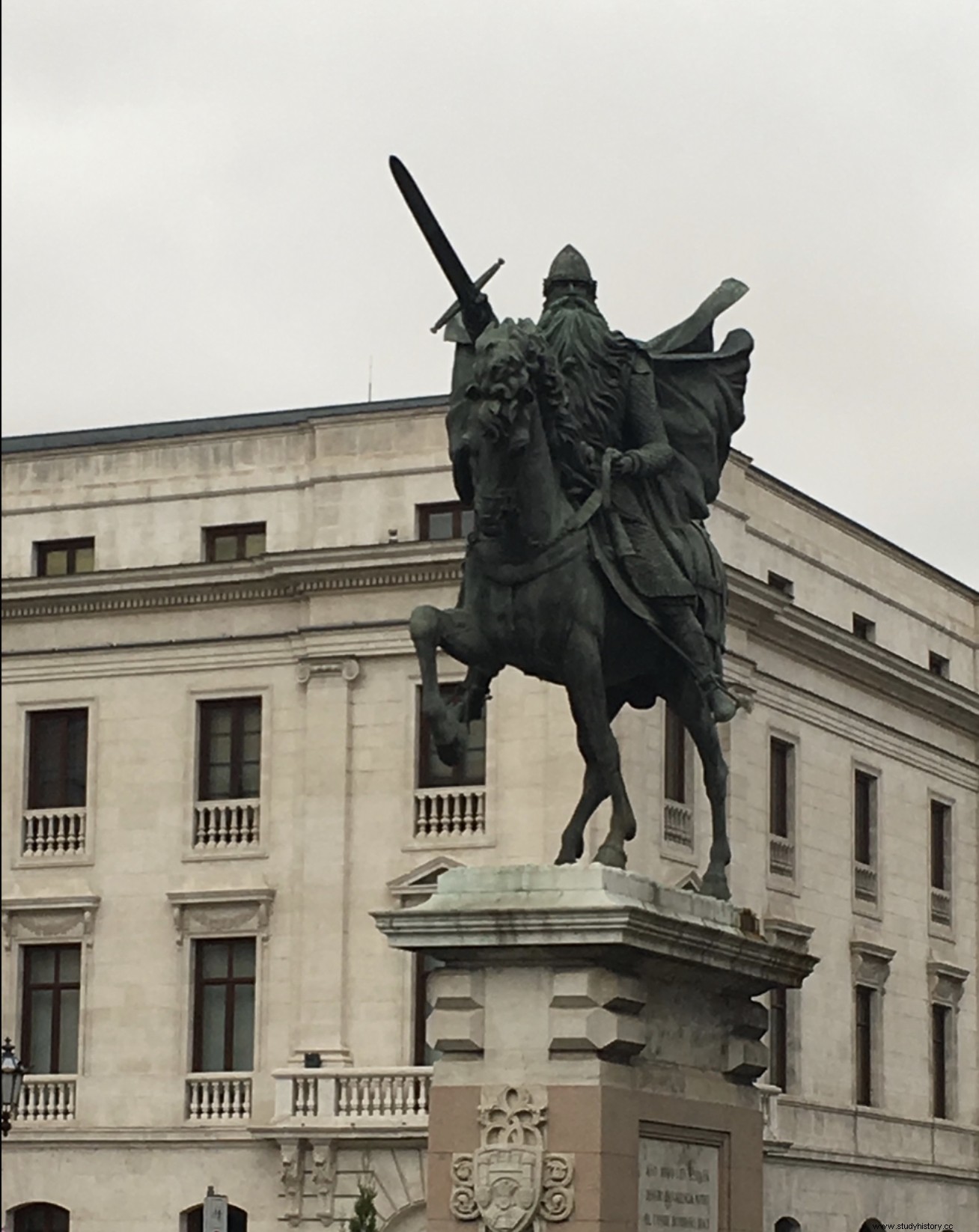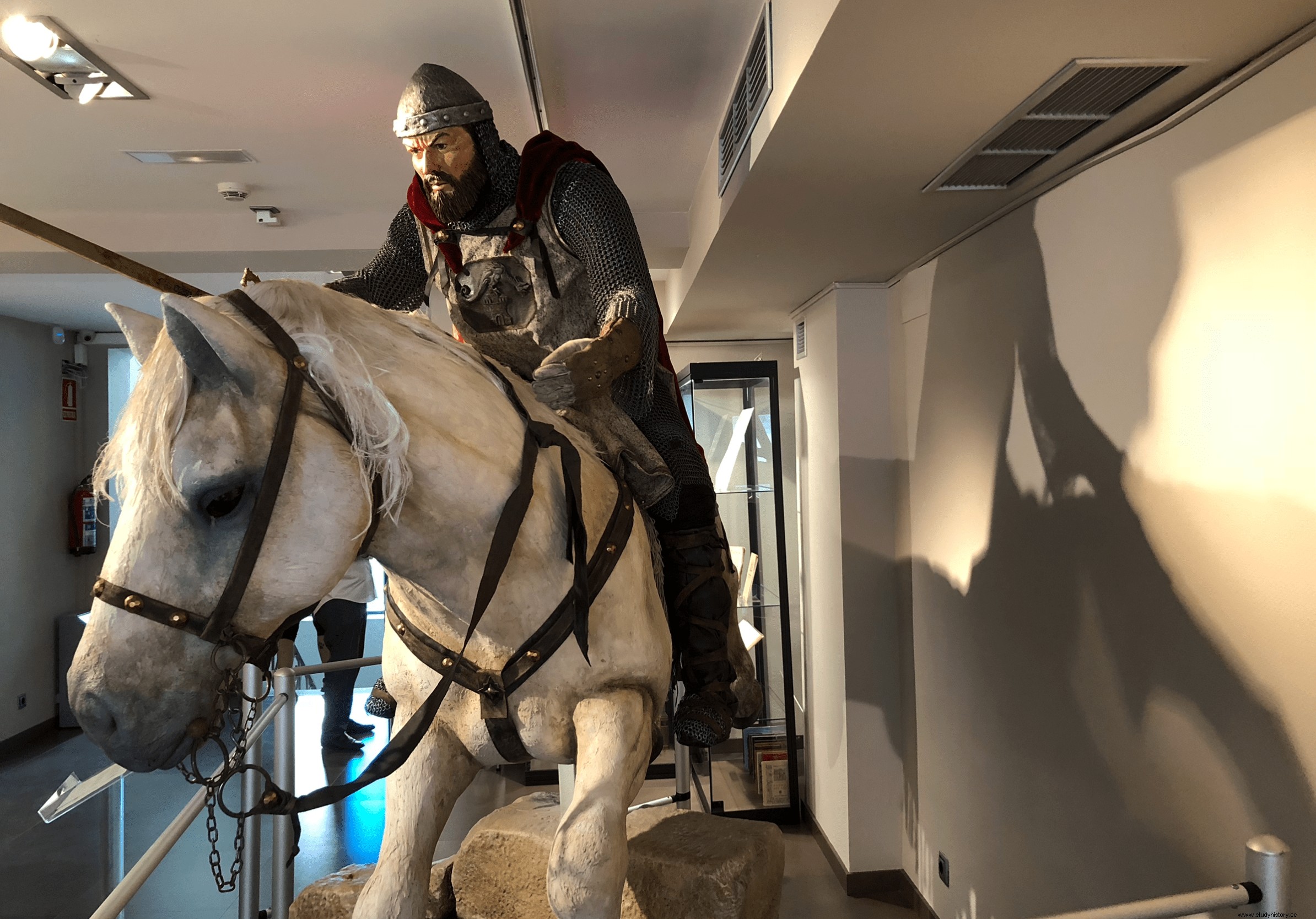Few figures have aroused more interest in the history of the medieval peninsular kingdoms than that of Rodrigo Díaz de Vivar, the Cid Campeador. At this point it is difficult to separate the historical character from the legendary and this requires, first of all, to carry out an analysis of the historical sources that have glossed over his adventures.
If we leave aside the epic songs, especially the famous Cantar de Mio Cid , which (without denying its merit as a literary work) lack value as a reliable historical source, there is a large bibliography that allows us to affirm without a doubt the veracity of the figure of Rodrigo Díaz de Vivar. In addition to the Christian sources, various Muslim chronicles refer to him and, what is more important, there are diplomas and documents that outline Rodrigo as intervening in one way or another in the events described in them.
There is a first contemporary work to the Cid's own life, the so-called Carmen Campodoctoris , a poem composed between the years 1082 and 1093, but it is a laudatory composition of the character, too short and that only reaches the year 1082, so it is not enough as a source to decipher the figure of the Champion, although it does reveals the origin of this denomination (which means the one who excels on the battlefield with indicated actions), when, after narrating his first great victory, he details :
This was his first single combat,
When, still a teenager, he beat the Navarrese
Since then, the noblest men
They called him Champion.
The next work that we necessarily have to talk about as a historical source is the Historia Roderici , written shortly after his death (Menéndez Pidal estimated that it was written before July 1110) by an unknown author, but everything indicates that he was a witness to the narrated events. The manuscript of the Historia Roderici It suffered diverse and novelistic vicissitudes since it was discovered in 1785 by Father Manuel Risco in the Collegiate Church of San Isidoro de León until it ended up in the Royal Academy of History.
The veracity of the manuscript (which contains both a narration of events and a transcription of documents) has been confirmed by other historical sources, both Christian and Muslim, which confirms that the author was a contemporary of the story and its protagonist and that he had access to documents from the Cid's own family archive, which does not exempt from the obligation to critically analyze its content.
Other historical sources in which Rodrigo Díaz de Vivar is mentioned are Cronicón Burgense, Anales Compostelanos, Anales Toledanos Primeros, Cronicón de Cardeña, Cronicón Malleacense and Crónica Najerense.
Among the Muslim sources stand out The eloquence evidencing the great calamity, written by the Valencian Muslim Ibn Alqama, which narrates from the point of view of the defeated, the conquest of Valencia of which the author was a direct witness (he was born around 1037 and died in 1116). The original of this work was lost and has come down to us through excerpted transcriptions in later Christian writings or Muslim compilations.
Less significant (and historically less reliable due to its partiality), the work Treasure of the excellences of the people of the Peninsula , Ibn Bassam's work is, however, very useful for knowing significant data on the period of the Cid's rule in Valencia.
And other Muslim works that also dealt at some point with the figure of the Cid are those of the later historians Ibn al-Kardabus, Ibn Idari al-Marrakusi, Ibn Abi Zar, Ibn al-Jatib, Ibn Sammak al-Malaqi, Ibn Khaldun and al-Maqqari.
Lastly, a multitude of letters and diplomas from diverse origins testify to diverse moments and acts in the life of the Cid. Menéndez Pidal compiled in his Cartulario Cidiano 63 diplomas from ecclesiastical centers and referring to Rodrigo Díaz de Vivar, although some of them do not stand up to critical analysis and should be discarded as apocryphal.

Once the historical veracity of the figure of Rodrigo Díaz de Vivar has been established and the sources that deal with his life have been reviewed, it is time to tackle the episode that is the subject of this entry:the first exile of the Cid. This forces us to deal with the difficult relationship between the Campeador and the monarch who sentenced him to this penalty:Alfonso VI, King of León, Castile and Galicia.
El Cantar del Mío Cid narrates an episode that has been recorded in the popular imagination, when Rodrigo Díaz de Vivar, el Cid, who had been the main servant and right-hand man of the late Sancho II, made Alfonso VI swear three times that he would not he had had nothing to do with the death in Zamora of his brother Sancho. In this way, the man from Burgos earned Alfonso's dislike, an enmity that would continue over the years.
There is no historical basis whatsoever to support this episode of the triple oath. The first sources that review it, the chronicles of Lucas de Tuy (around 1236) and Rodrigo Jiménez de Rada (around 1243) are almost two hundred years after the events and are not exactly distinguished by their historical reliability, which they sacrifice in more than one occasion for the benefit of the epic story of the history of the Castilian-Leon kingdom. The Carmen Campidoctoris and the Roderici Story They say nothing about this matter.
The Cid did not require that unusual oath from the king three times, nor did Alfonso at that time make enemies with the man from Burgos, who was well received at court and to whom he proposed to marry the king's niece, Jimena. Puente López points out that some type of exculpatory oath could have been produced, but devoid of all the legendary paraphernalia. This procedure was for him:
“Something common in those circumstances, after the death of a monarch in violent circumstances. The subsequent juglaresque imagination gave a dramatic veneer to this oath, including fictitious and habitual characters in the Castilian epic literature. And without there being any relation to this matter, it is normal to consider that the circumstances forced Alfonso to dispense with Rodrigo Díaz as royal lieutenant, in favor of his faithful Pedro Ansúrez».
On December 8, 1072, Rodrigo Díaz does appear in the list of grantors of a diploma awarded in Cardeña that refers to Alfonso's presence in Castile, which attests that he was one of the members of his retinue. This is also reported by the Historia Roderici :«Well, after the death of his lord King Sancho, who had raised him and had loved him greatly, King Alfonso received him with all honor as a vassal and kept him close to himself with great love and reverence».
The Carmen Campidoctoris It goes even further and tells how the king "began to feel no less affection for him, wanting to distinguish him above the others, until his colleagues at court began to envy him."
The differences between one and the other would come later and we have to mention in this connection an episode that caused Rodrigo to fall out with one of the main and closest magnates to the monarch of the kingdom of León.

In the second half of the year 1079, the king entrusted his vassal of Vivar with an honorable task, that of collecting the outcasts owed by the taifa of Seville. Rodrigo arrived in the Sevillian capital, where he agreed on the amount to be collected. But before he left, King al-Mutamid informed him that he was suffering an attack from his neighboring kingdom, that of Granada, and requested the help of the Cid's retinue, in compliance with the pact with Alfonso (the defense of the Sevillian kingdom against the payment of the pariahs).
Rodrigo set out in effect to fulfill the part of the agreement that corresponded to him and reached Cabra, where the army of the king of Granada, al-Mudaffar, was located. The problem, according to the Historia Roderici , was that along with the Granada host there was another Leonese contingent, under the command of the powerful count García Ordóñez, governor of La Rioja, accompanied by several Navarrese noblemen (García Ordóñez's wife, Urraca, was the daughter of the king of Pamplona). /P>
El Cid sent a message to the king of Granada in which he urged him to withdraw, since the king of Seville was under the protection of Alfonso VI. But the people of Granada mockingly rejected his request, which seems to have been shared by García Ordóñez's contingent from León.
Diplomatic attempts exhausted, both armies faced each other on the battlefield for three hours, the Grenadian force bearing the brunt. García Ordóñez and his Navarrese relatives were taken prisoner, stripped of their tents and the remains of their belongings, and, after three days of captivity, released by the Cid. The mention that the Cid even allowed himself to humiliate García by pulling his beard appears to be a later addition to the Cantar de Mio Cid no historical basis to support it. Even so, for the count, the defeat at the battle of Cabra and the loot that was taken from him by Rodrigo must have been quite humiliating. He had made a powerful enemy and, according to the Historia Roderici , "many envious ones, both among those close to him and among strangers, accused the Champion before the king of many falsehoods."
It is possible that Alfonso received contradictory news about what happened in Cabra and that he considered that, in any case, the Cid had acted too harshly by keeping García and the Navarrese prisoners for three days and stripping them of their belongings. But he did not take any action against Rodrigo at the moment. For this, we would have to wait for another episode and we will dedicate the second entry of this series to that.
Wake up Ancient and Medieval Ferro Nº40. El Cid
Image| Author Archive
